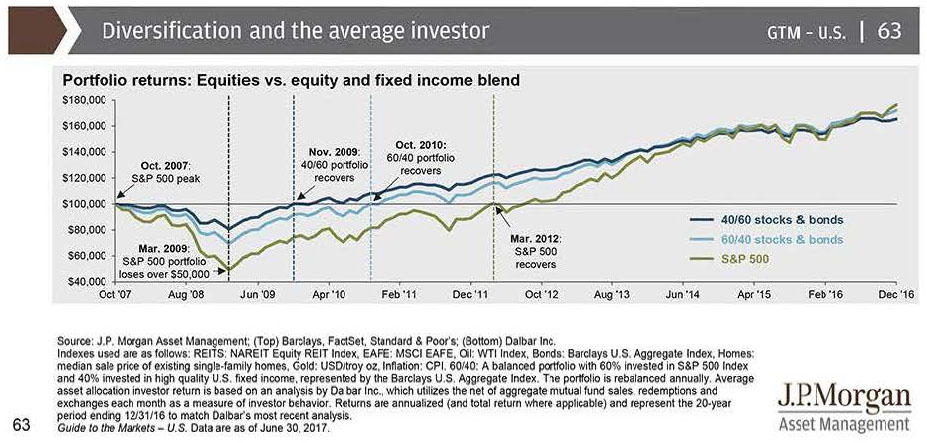Every so often, a well-intentioned investor will ask the question, “why is my portfolio not up as much as the market?” When referring to “the market,” most investors are referring to the S&P 500 Index or a similar index that represents the stock market’s performance. The S&P 500 Index consists of solely domestic large-cap equities with no fixed income, mid-cap equities, small-cap equities or international equities represented in the index. Rather than be concentrated in one segment of the market, Condor recommends broad diversification among the various asset classes (i.e. equity, fixed income), market capitalizations (i.e. large-cap, small-cap), geographical regions (i.e. domestic, international), and investment styles (i.e. growth, value). As a result, the S&P 500 Index is often a poor indicator of a balanced portfolio’s performance.
Do Not Compare Apples with Oranges
One of the challenges of portfolio construction is striking an optimal balance between portfolio growth and principal protection. Equities have historically generated higher returns over longer time horizons relative to most other asset classes. During periods where domestic large-cap stocks are rapidly increasing, the S&P 500 can outpace a balanced portfolio’s return due to its greater concentration in that market segment. However, the S&P 500 Index also takes on a greater risk profile. During a period where domestic equities are declining, a broadly diversified balanced portfolio has a greater likelihood of preserving capital compared to the S&P 500 Index.
Too Much of a Good Thing Does Exist
If equities have historically generated the highest return, why not just own 100% equities? The answer is volatility, time horizon and human nature. The chart below illustrates the performance of the S&P 500 Index compared to a portfolio of 60/40 (stocks and bonds) and 40/60 (stocks and bonds) during the recent 2008 recession. As you can see from the chart, the magnitude of the decline as well as the length of time before recuperating losses was greatest in the S&P 500 Index, which contains 100% equities. The portfolios consisting of stocks and bonds were able to limit losses much more effectively during the downturn and therefore needed less time to recover. While these downturns are temporary, investors may not have the ability to endure these large market declines without withdrawing from their portfolio. As a result, an investor may be forced to sell at inopportune times, which lowers their overall investment returns. In an attempt to temper portfolio volatility to a level that is more bearable, we construct diverse portfolios that include less volatile asset classes such as fixed income in order to provide some downside protection during a market pullback. This also allows us to occasionally rebalance a portfolio to lock in gains during periods of market strength or be opportunistic during periods of market weakness.

The Role of Fixed income in Portfolio Construction
Fixed income historically has been a natural complement to diversify an investor’s equity exposure. Bonds typically will fluctuate less in value relative to equities and historically have been negatively correlated with the stock market during periods when stock prices have dropped dramatically. This level of stability within fixed income does have a cost in the form of lower historical returns compared to the stock market. However, holding fixed income within a portfolio allows for a smoother and more consistent return overall. It is tempting to increase equity exposure during a bull market in order to chase greater returns, but instead of increasing equity exposure during these periods of divergence, it would be more advantageous to sell some equity in order to rebalance the portfolio. Simply put, if everything in the portfolio goes up and down together, then the portfolio is not diversified enough.
Ultimately, it is important to allow each asset class to perform its role within the portfolio. For fixed income, that is to provide downside protection if equity prices fall. It would be imprudent to assume equities will never enter a bear market at some point. As a result, it is wise to be prepared for it and maintain a balanced portfolio.



